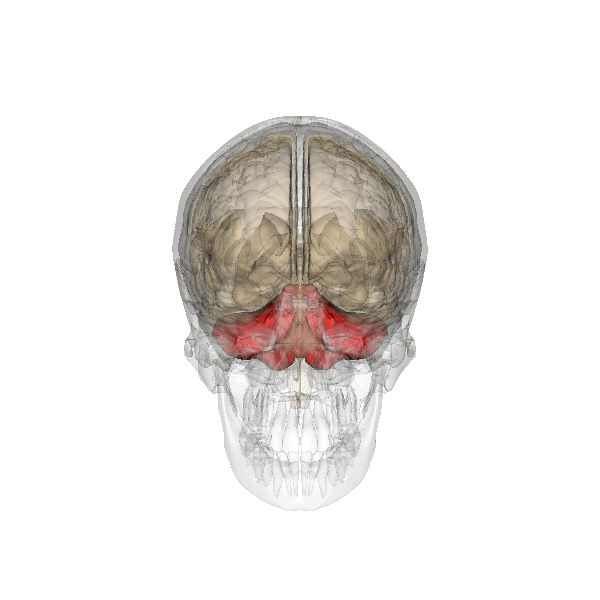Throughout the history of medical care, physicians have seen many mysterious and unusual patient cases in their careers. Some have actually participated in treating some of the most bizarre medical cases in history. Today, we will explore three weird medical stories you probably won’t believe are true. One of the three is unique, and you may never hear of another similar story again.
We previously shared various examples of unusual human medical abnormalities in a previous post. In this post, we will share 3 specific cases involving a baby, man and young woman. Each have a medical story that has caused doctors a lot of confusion, as well as inspiration to cure their unusual conditions. Our first case is an amazing story about a baby born with a foot in its brain.
#1 Baby Born With A Foot In The Brain
We are first going to share one of the most extraordinary conditions physicians have ever seen. A Colorado couple had struggled for years to have a baby. They were unable to conceive for several years. After coming to the conclusion that they probably couldn’t produce a child, they became pregnant. The child’s parents were ecstatic for successfully conceiving and had named their child Sam. However, towards the end of the pregnancy, an ultrasound had revealed an unusual and unexpected condition with Sam. Doctors had discovered fluid in the ventricles of the brain.
Just three days after the child’s birth, doctors had detected a large mass in the child’s brain. After removing parts of the tumor, doctors had soon discovered something bizarre. Inside the larger tumor (on the right side of Sam’s head) was a foot that was perfectly formed. There was also a partial formed foot, thigh, hand and even a buttocks that was growing in the tumor. Very freaky!
What Caused Sam’s Bizarre Condition?
Sam’s condition may have been caused by a fetus that was developing in an abnormal part of the body. However, doctors believe the tumor is actually a teratoma. A teratoma is a rare type of complex tumor that is formed from different layers of a normal fetus. The tumor can cause the formation of appendages. It can also cause the formation of hair, teeth, bone and even complex organs (such as the eyes). Complex organ formation is very rare. Teratomas have been seen in areas such as the neck, abdomen and the chest. However, seeing one in the brain is unheard of.

“Teratoma 2 low mag” by Nephron is licensed under CC BY-SA 3.0
The above image shows a low magnification micrograph of a mature teratoma.
Fortunately, the good news is that teratomas are usually benign (noncancerous). Today, Sam still gets tested to ensure there are no signs of any cancer. He also gets tested to ensure there are no signs that the tumor is growing back. Interestingly, doctors had originally gave Sam a 50/50 chance of survival. However, thanks to the assistance of experienced and determined surgeons, Sam is now healthy and developing normally. This child is surely a great example of a living miracle.
#2 Parasitic Tapeworm Lived In Man’s Brain For Four Years

A 50-year-old Chinese man had complained about having headaches, seizures and a disturbance with his sense of smell. This compelled him to eventually seek medical attention. To determine his condition, he was given various tests. Although he tested negative for a variety of diseases, brain scans had finally revealed the actual cause of his symptoms. The man had a one centimeter tapeworm actually living in his brain for four years. The parasite had managed to migrate a total of five centimeters from the right side of the brain to the left. In 2012, surgeons had finally removed this bizarre tapeworm. Fortunately, due to the successful surgery, the man’s infection was cured.
What Kind Of Parasite Was In This Man’s Brain?
According to researchers, the parasite that was living in the man’s brain is called a Spirometra erinaceieuropaei. This is a rare species of tapeworm. It is usually found in China, South Korea, Japan and Thailand. There are only 300 known cases of infection from this particular parasite in humans.
How Does One Get Infected With This Particular Parasite?
According to scientists, the Spirometra erinaceieuropaei parasite may be contracted just by simply eating crustaceans and reptiles that harbor it. The parasite may also be caused by using a Chinese remedy recommended for sore eyes (because the contents of the remedy is made from frogs).
The majority of parasitic tapeworms (that can infect humans and domestic animals) will live in the intestines. They will usually cause very few symptoms and are fairly simple to treat. However, in the very rare cases (such as this one), tapeworms can potentially migrate all the way to the brain. How uncomfortable it must have been for this man. Thank goodness for modern technology.
#3 Woman Born Without A Cerebellum

“Cerebellum.gif” by Life Science Databases(LSDB) is licensed under CC BY-SA 2.1 JP
The cerebellum is a section of the brain (found in all vertebrates) and is located at the base of the skull (between the cerebrum and the brain stem). Although its job is to systematize and regulate muscular activity, scientists believe it may also play a crucial role in some cognitive functions. These particular functions include attention and language. It may also play a role in regulating fear and pleasure responses. Without a doubt, the cerebellum is a very necessary section of the brain.
Although losing partial function of the cerebellum due to injury or disease is not uncommon, being born without one is very rare. Neurosurgeons in China have discovered a 24-year-old woman born without a cerebellum. She is only the 9th known case of a living person born without a cerebellum.
The woman’s rare condition was discovered not long after she had requested medical attention for experiencing nausea and vertigo. To determine her condition, she was given CT scans and MRI images that had showed her cerebellum was missing. The missing cerebellum explains why she was experiencing nausea and vertigo. It also explains why some of her abilities had developed much slower than an average child. Unfortunately, she wasn’t even able to speak until she reached the age of six, and wasn’t able to walk until the age of seven. She also had complications with her coordination. Growing up as a child, she couldn’t play and do physical activities (such as jumping) like the rest of the kids her age. Today as an adult, she still requires assistance to walk steadily.
Although the 24-year-old woman has issues with understanding vocabulary and difficulties with her pronunciation, physicians are still amazed that her symptoms are more mild to moderate impairment, rather than a complete absence. She is now married and had went through a pregnancy with no complications. Luckily, her daughter does not have any neurological defects.
Since The Cerebellum Is Missing, What Has Filled The Missing Space?
The human body will often try to compensate for what is lost. In this case, the empty space (where the cerebellum is supposed to be) is filled up with cerebrospinal fluid. To help remove some of the excess water pressure, the patient was provided with a dehydration treatment (as well as other less invasive treatments). Treatment was successful and quickly helped improve the symptoms.
Physicians are still puzzled on how this rare condition actually occurred. It is also unknown whether this woman’s condition will change (for better or worse) as she gets older. Only time will tell. Fortunately, she has survived all the way to age 24. Her miraculous survival allows her condition to be further studied to possibly provide some answers to this unsolved mystery.
Conclusion
It is amazing how technology and medicine has evolved over the last few decades. Advancements in medicine has allowed us to get a better understanding of the bizarre diseases that have come our way. It has even brought treatment for the cases that once seemed to be completely hopeless.
Do you have another weird medical story you would like to share in comments below? You may have a story of your own. With all of the possible odd abnormalities that humans could encounter, chances are, you will hear about many more bizarre medical stories in the future decades to come.

